Hyundai adds Veloster Turbo, Elantra Coupe and GT
By John Gilbert
SAN DIEGO, CA. — Hyundai has introduced so many impressive new vehicles in the last two years, you’d think the Korean auto-maker deserves to sit back and enjoy the rewards for a while. Instead, Hyundai is adding to its impressive array.
Since the 2011 Sonata, which thrust the company into the spotlight, two of the more interesting vehicles from Hyundai are the compact Elantra, which resembles a downsized Sonata and is such a coordinated and polished car it won the 2012 North American Car of the Year award, plus the unique and sporty Veloster, a three-door hatchback with sporty coupe flair and an accessible rear seat through a second passenger-side door.
Both the Elantra and Veloster were introduced as 2012 models. The Elantra as a remake of a car that was never an ugly duckling but was transformed into the automotive version of a stylish swan, while the Veloster is an all-new model. The Elantra more than delivered on its promise while rewriting the style and feature rules for compacts and also getting 40 miles per gallon. The Veloster was fun, but it promised performance that its high-tech and rev-able 1.6-liter engine had trouble delivering.
With both cars in their introductory year, Hyundai gathered the North American auto media at Torrey Pines, the plush resort in La Jolla, Calif., right near Hyundai’s U.S. corporate offices and design center, to unveil three new versions of the two cars — a turbocharged Veloster, and both a coupe and a five-door, wagon-like model of the Elantra.
The Veloster, Hyundai admitted, was a little shy on power. The 1.6 from the new Accent is a high-tech little jewel, with gas-direct-injection and variable valve-timing, and it is more than adequate for most consumers and most circumstances. But in the Veloster, if it is going to challenge such sporty icons as the GTI, Civic Si, Mini Cooper S, and Beetle Turbo, all of which slap a permanent smile onto the face of anyone driving them, more punch was needed. Hyundai responds promptly when it decides public reaction warrants it, and a twin-scroll turbocharger was the remedy.
A normal, single-scroll turbo picks off some of the exhaust flow headed out the tailpipe and redirects it to spin a turbine-wheel that sends a greater charge of air-fuel mixture back into the engine for improved burning and power. The system works, although there are some minor problems with varying exhaust pulses from different cylinders, which can increase back-pressure and heat and produce uneven airflow back into the cylinders. A twin-scroll turbo has two inlets in the turbine housing, separating the variant exhaust flow and minimizing back-pressure and creating a more pure and dense consistency to the forced-air feed going back into the cylinders.
Twin-scroll turbos usually are found only on far more costlier and exotic cars, but the Hyundai system works very well, with a maximum boost of 18.0 psi. Combined with Hyundai’s proven gas-direct-injection system, which starts the engine off with a high-pressure, low-temperature mixture for optimum burning — for more power and improved fuel economy — the Veloster Turbo 1.6 delivers 201 horsepower at 6,000 RPMs, and 195 foot-pounds of torque at only 1,750 RPMs. The 201 horsepower is a whopping 63 more than the normally-aspirated 1.6 in the garden-variety Veloster.
Getting the push of torque at such low RPMs gives the feeling that there is much more torque. The great asset of the normal Veloster is that it is fully capable of reaching 40 miles per gallon, and if you had to be patient for the power to come up at higher revs, it is worth the wait. With the Turbo Veloster, no waitilng in acceleration, but also, no real suffering at the gas pumps. The 6-speed stick Veloster Turbo delivers EPA estimates of 26 city and 38 highway, while the 6-speed automatic with Sportshift hits 25/34. The Sportshift includes fingertip paddles to upshift on the right and downshift on the left without taking your hands off the wheel.
Those EPA figures aren’t quite at 40 mpg, but the Veloster Turbo burns regular fuel. If you don’t think that’s significant, last time I looked, the premium required by the GTI and Mini S and Beetle Turbo is about 40 cents more per gallon than regular.
Naturally, the turbo version costs a premium price, but typically of Hyundai, the regular Veloster is so inexpensive that the added price for the turbo is surprisingly reasonable. The Veloster Turbo with 6-speed stick is $22,725 and with 6-speed automatic $23,725, which leaves it generally a couple thousand less than competitors. Veloster sales have been so good that Hyundai says they are only limited by supply’s inability to keep up with demand. For a couple decades now, we’ve been told that people don’t buy manual transmissions any more — usually by manufacturers that don’t offer a stick any more. Mazda has said that it sells a surprisingly large proportion of stick-shift cars, and Hyundai is reinforcing that trend; Veloster sales have been 30 percent sticks so far, and the Turbo may increase that percentage.
Driving the Veloster Turbo shows the obvious increase in power, but also that it comes on smoothly. The in-house designed turbo — same as used in the larger Sonata Turbo’s 2.0-liter — does an excellent job of simply making you feel as though you have a larger engine doing the work under the hood. There is no stiffening of the suspension, but combining added power, a quickened steering system, and styled wheels that are 18 inchers, makes the Veloster Turbo feel as though it has been modified for sportier driving.
During our introductory ride, when I vacated the driver’s seat, I chose to sit in the rear, where climbing in through the rear door is tight, but once inside, the roominess for head and legs is surprisingly good.
The assembled auto writers put the GT through its paces on two demanding autocross circuits, laid out with cones in a large parking lot area. On the normal autocross, I did OK, with my best time pretty good, although not among the quickest tire-screechers. On a secondary circuit, which started with the need to back up from one cul-de-sac into another, then accelerate down a short chute to make a complete 360-degree clockwise turn, more slaloming to another circle for a counter-clockwise run, then through a couple of chicanes to the finish. For some reason, I did much better on that course, with two runs in the 46es, winning an award for the fastest time, at 46.72 seconds. On my second run, I hit 45.16 seconds, but I hit one cone, earning a penalty. The cone jumped out in front of me, but it could have been a pedestrian.
Styling cues, such as fascias and LED lights front and rear, set off the Turbo from the Elantra sedan. One unique feature is a matte-grey paint job which is stunning, and which you to sign a form saying you will avoid car washes and hand-wash that special finish.
ELANTRA TWINS
The Elantra uses a 1.8-liter 4-cylinder, which has proven to reach 40 mpg without the costly addition of gas-direct-injection. It is stylish and very popular, and 250,000 of the first-year models carved out a 10 percent market share in the compact segment, even against such stalwarts as Civic, Mazda3, Corolla, Focus, and Cruze. The new Coupe takes stylish to a new plateau, and should give Elantra another boost. Yet personally, I prefer the 5-door Elantra GT to its sedan and Coupe siblings.
The 1.8 engine in both Coupe and GT doesn’t have the firepower of the turbo 1.6 in the Veloster, but it has dual variable valve-timing and delivers 148 horsepower at 6,500 RPMs and 131 foot-pounds of torque at 4,700 RPMs. The engine has evolved with several methods of making it more efficient. The CVVT timing can leave the valves open, for example, when not firing, which allows the piston to move freely without the vacuum of closed valves. Lighter materials reduce weight with a plastic intake manifold.
The Coupe has great lines, similar to the proportions the new Genesis Coupe has to the standard Genesis sedan, and it will be a direct competitor to the Civic Coupe. It feels good to drive, but on our introductory run through the mountainous region east of San Diego, we only drove the Coupe automatic. It was good, but I need to drive the stick to compare. Great attention to quietness helps the Coupe’s demeanor on the road, with two suspension settings available. Improved dampers, a quicker steering rack, and a V-beam rear housing for the stabilizer bar all aid the handling.
The very smooth 6-speed automatic lacks the Veloster’s paddles, which is too bad. Prices run $3,000 less than a Civic Coupe, with the loaded GS model starting at only $18,220.
The performance of the Coupe may be noteworthy, but the GT 5-door feels even sportier after brief driving through curving California mountain roadways. The 6-speed manual felt really coordinated in the GT in all conditions.
Hyundai stretched the sedan platform for the GT and gave it and the Coupe unique suspension and steering for sportier feel. The GT has a 2-inch longer wheelbase, even though it is actually 9 inches shorter than the sedan. The GT with manual weighs only 2,746 and 2,734 with automatic, making it lighter than its competitors. The base GT starts at $19,170, and both Tech and Style packages are available, with such amenities as foglights, a panoramic sunroof, push-button start, underfloor storage compartment under the hatch, dual climate control and 60/40 fold-down rear seats. A push-button setting alters steering response from normal to comfort to sport.
A fellow who was coordinating all the vehicles asked me how we had driven on our GT tour of the mountains. I told him my co-driver was pretty conservative, but I really pushed the GT around the curvy mountain roads on the preplanned route. He said that he was able to calculate how all the drivers had done for fuel economy, and while all were coming in at between 27-29 mpg, we had recorded 31.8 mpg, on the twistier part of the course, at 8,500 feet.
That said something about the discipline of our driving, but told a lot about how efficient the Elantra GT is, because we were certainly not driving for optimum fuel economy on the handling part of our drive.
Rigidity of the GT body is improved 37 percent by increased use of high-grade steel, and it has a sleek 0.30 coefficient of drag. The GT was styled and originated for sale in Europe, where the car sells very well. It always was planned for the Korean-built version of the GT to be brought to the U.S.
Hyundai projects that the Elantra sedan will continue to sell as many as supply allows, with the GT and Coupe each comprising 15 percent of the Elantra total.
Without question, Hyundai is continuing on a high-tech roll. Some companies are striving to build better cars; Hyundai is building exceptional cars, and then improving and diversifying them within months of their introduction.
Comments
Tell me what you're thinking...
and oh, if you want a pic to show with your comment, go get a gravatar!


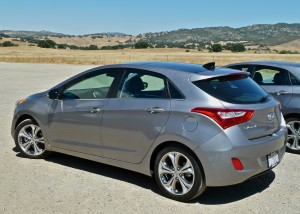
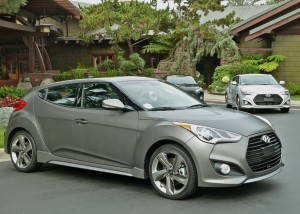
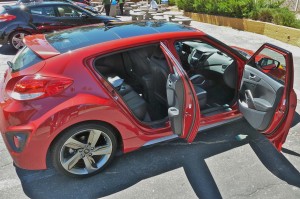
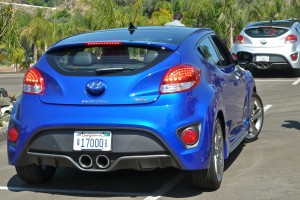
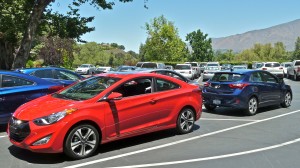
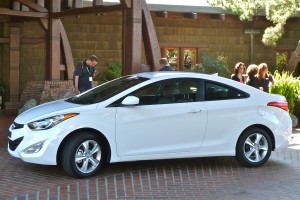
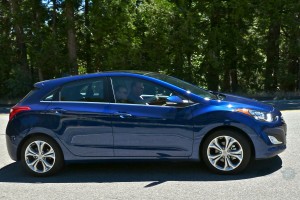
 John Gilbert is a lifetime Minnesotan and career journalist, specializing in cars and sports during and since spending 30 years at the Minneapolis Tribune, now the Star Tribune. More recently, he has continued translating the high-tech world of autos and sharing his passionate insights as a freelance writer/photographer/broadcaster. A member of the prestigious North American Car and Truck of the Year jury since 1993. John can be heard Monday-Friday from 9-11am on 610 KDAL(www.kdal610.com) on the "John Gilbert Show," and writes a column in the Duluth Reader.
John Gilbert is a lifetime Minnesotan and career journalist, specializing in cars and sports during and since spending 30 years at the Minneapolis Tribune, now the Star Tribune. More recently, he has continued translating the high-tech world of autos and sharing his passionate insights as a freelance writer/photographer/broadcaster. A member of the prestigious North American Car and Truck of the Year jury since 1993. John can be heard Monday-Friday from 9-11am on 610 KDAL(www.kdal610.com) on the "John Gilbert Show," and writes a column in the Duluth Reader.